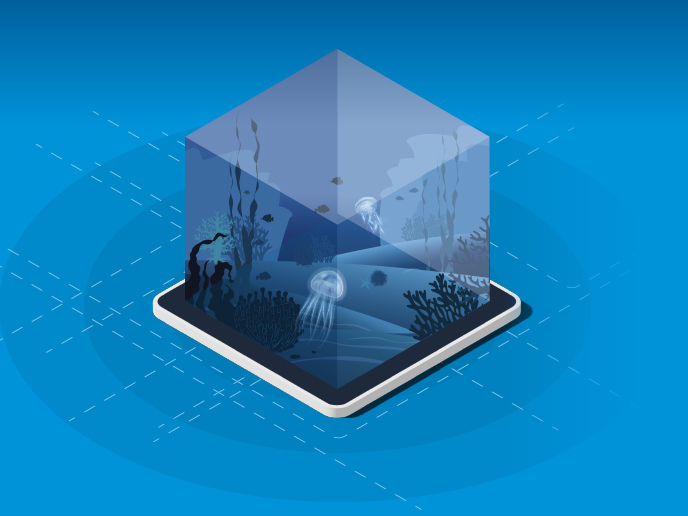New tools to support marine ecosystem biodiversity
The health or condition of one ecosystem affects the health of another.
Cindy Cornet, MaCoBioS project co-manager
Marine vegetated ecosystems such as seagrass beds and kelp forests perform a number of critical ecosystem functions. These include carbon storage, coastal protection and providing habitat for marine species. “Seagrass beds are often part of a mosaic of interconnected habitats,” explains MaCoBioS project co-manager Cindy Cornet from the University of Portsmouth in the United Kingdom. “For example, Caribbean seagrass beds are often associated with coral reefs and mangrove forests, and the health or condition of one ecosystem affects the health of another.” The EU-funded MaCoBioS project set out to better understand the complexity of these interconnections in order to implement effective blue nature-based solutions (NBSs) that better preserve the health and biodiversity of these valuable ecosystems. To do this, fieldwork has been carried out in the seas around northern Europe, the Mediterranean and the Caribbean. This involved the implementation of innovative technologies such as remote sensing and passive acoustic monitoring, as well as visual observations. “We’ve since been very busy developing conceptual models for each of our focused ecosystems, including coral reefs, seagrass beds, mangrove forests and kelp forests,” says Cornet. “We’ve also developed a multi-risk assessment framework, an adaptive capacity assessment framework and other decision support tools. These are all interconnected to support practitioners and decision makers in implementing appropriate blue NBSs.” Every framework, model and tool will be gathered in a toolbox and made freely available at the end of the project. The project team is also currently organising a major blue NBS event, which will be held at UNESCO headquarters in Paris, France. “By definition, NBSs have to be designed to work with nature, and bring benefits to both biodiversity and human well-being,” adds project co-manager Ewan Trégarot. “We hope that future research projects, practitioners and decision makers will take up the suite of tools we are developing to support blue NBS implementation – which has been seriously lagging behind terrestrial and urban NBSs. Most importantly, we hope that this will contribute to ensuring the sustainable management of marine and coastal socioecological systems.”
Keywords
blue carbon, ocean-climate-biodiversity nexus, climate mitigation and adaptation, natural carbon sequestration, ecosystem services, marine biodiversity, ecosystem functioning, functional ecology, maritime spatial planning, ecosystem-based approach



